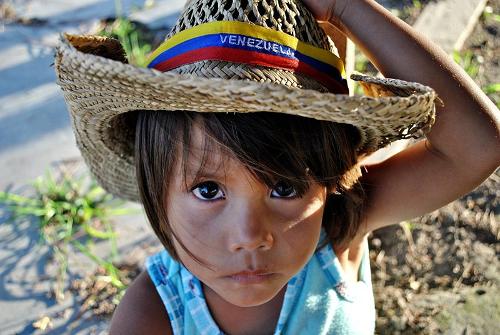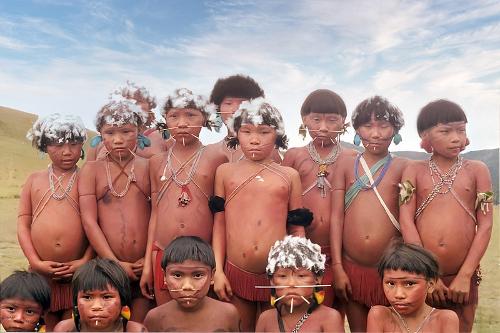VENEZUELA
Population

Population

Cities in VENEZUELA
| Caracas |
Popular destinations VENEZUELA
| Isla margarita |
Population
Venezuela had 30 million inhabitants in July 2017. The population density is approximately 34 inhabitants per km2. Population growth was 2.34% in 2024. Stagnation and mechanization in agriculture have led to a large migration to the cities, especially on the coast; in 1951 54% of the total population lived in cities, in 2017 that percentage was 88.4%. The capital Caracas and its immediate surroundings alone, including the suburbs, have about 3 million inhabitants. This is in stark contrast to the south of the country where only just 4% of the total population lives. Other large cities are Maracaibo, Valencia, Barquisimeto and Barcelona / Puerto La Cruz. Venezuela is a young nation with 45% of the population being 25 or younger. The average Venezuelan is about 74.5 years old, which is a lot given the great poverty that occurs in Venezuela.
 Venezuelan girl with sombreroPhoto: Wawaphotography CC 3.0 Unported no changes made
Venezuelan girl with sombreroPhoto: Wawaphotography CC 3.0 Unported no changes made
More than 70% of the population is of mixed descent, i.e. Mestizos of Indian-White descent or Mulattos of White-Black descent, or a combination of the two. Twenty percent of the population is white of mainly Spanish and Italian descent. That the whites are largely in the minority is exceptional for the South American continent.
Nine percent of the population is black, mostly descendants of slaves from Africa or immigrants from the nearby islands of Trinidad and Tobago in particular. They mainly live on the coast.
Only 1 to 2 percent of the population are indigenous Indians. These groups live in the northwest, in the Orinoco Delta and in the Guayana Highlands, the farthest corners of the country. In total, about 25 different strains can be distinguished. The Waraos live in the Orinoco Delta (approx. 19,000). The Guajiro (approx. 50,000) live in the northwest near Maracaibo. Most Indian tribes live in the Guayana Highlands and the Venezuelan Amazonas.
 Yanomamö, VenezuelaPhoto: Ambar (presumed) CC 3.0 Unported no changes made
Yanomamö, VenezuelaPhoto: Ambar (presumed) CC 3.0 Unported no changes made
The largest peoples in these regions are the Pemón, the Parao, the Makiritan and the Yanomamö, who still live practically in the Stone Age. Most Indian tribes have already been influenced to some extent by Western “civilization”, but still have their own languages, customs and customs. Native Americans often live in difficult economic conditions and generally have a low social status. They also often cannot make optimal use of utility and health facilities. The government does try to have all Indian children also receive education.
Immigrants from Italy and the neighboring countries of Venezuela were attracted by the economic prosperity of the emerging oil industry at the beginning of this century, which made Venezuela the richest country in South America for a long time. Moreover, it had a liberal society and a democratic government which attracted many intellectuals and artists from Chile, Peru and Colombia. At the moment things are not going well economically and only immigrants from even poorer countries such as Colombia and the Dominican Republic are coming to Venezuela. The immigrants of Arab origin can be explained by their relationship with the oil states of the Middle East.
Sources
Dydyñski, K. / Venezuela
Lonely Planet
Ferguson, J. / Venezuela : mensen, politiek, economie, cultuur
Novib
Launspach, W. / Reishandboek Venezuela, Margarita
Elmar
Morrison, M. / Venezuela
Chelsea House Publishers
O’Bryan, L. / Venezuela, Isla Margarita
Gottmer
CIA - World Factbook
BBC - Country Profiles
Copyright: Team The World of Info